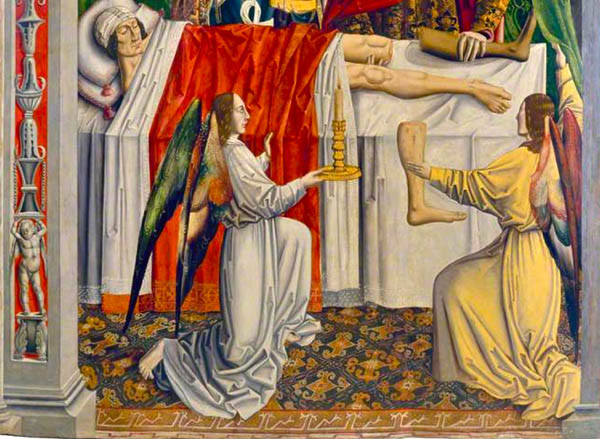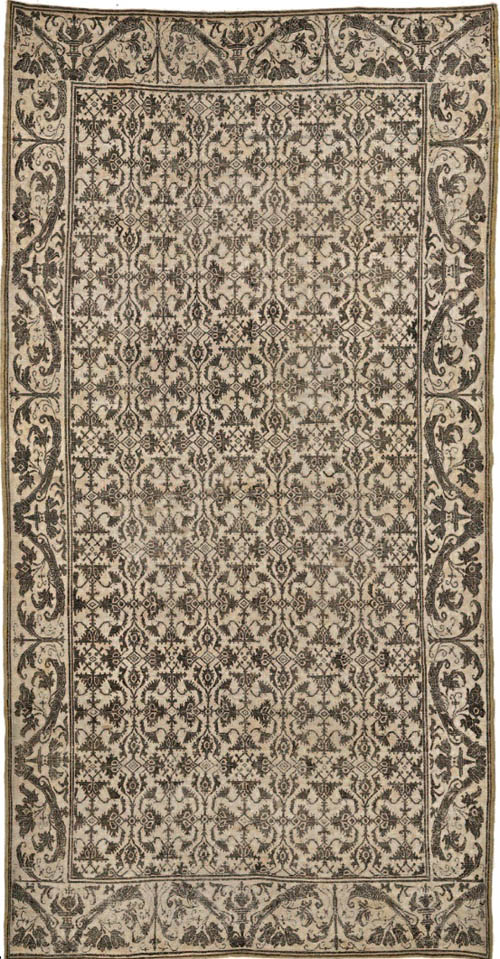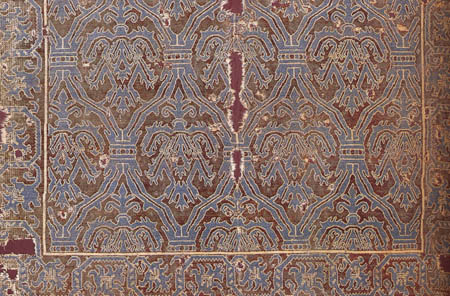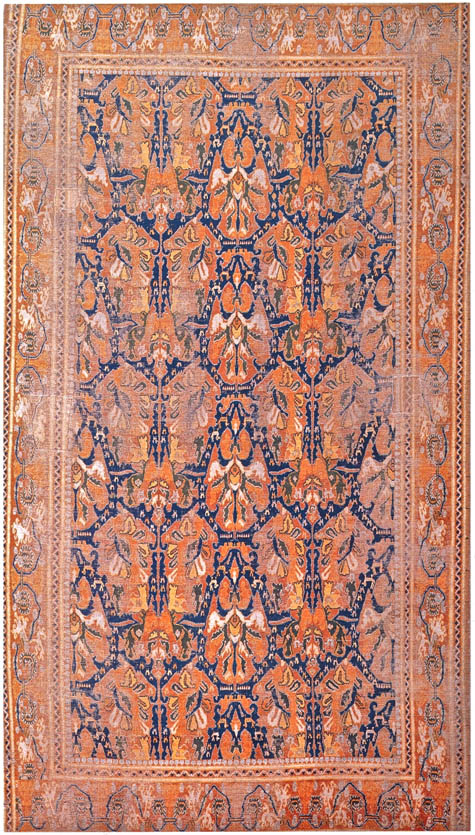| April 19th, 2012 05:36 PM | |
| Pierre Galafassi |
An interesting Spanish rug in a fifteenth century painting. Hi all, The 1494 painting below (FIG 1) features a successful limb transplant, but, next to surgeons it might be interesting for rug experts too. The field motif shows a clear Renaissance influence. The palette, in particular the reddish beige (or dullish orange) can be seen in several extant sixteenth century Spanish rugs. IMHO the border still has an Islamic flavor, but I would rather not start a «Kufic»-type polemic here.  FIG 1. Master of Los Balbases, 1495, Sts. Cosmas' and Damian's miracle, detail. Welcome Library.  The following pictures show examples of extant Spanish rugs in which the Mujedar tradition is in part superseded by Renaissance influences. FIG 2. Spanish. Sixteenth century. 549X283.MIAQ  FIG 3. Spanish, probably Alcaraz, fragment. Sixteenth century.  FIG 4. Spanish, probably Cuenca. Sixteenth century. MNAD  FAQ: What on earth are «Balbases» ? Answer: I don’t have a clue, but «Los Balbases» is a Spanish village, once fief of a Genoan military luminary fighting for the King of Spain: Ambrogio Spinola. (Wikipedia dixit) Mujedar ? Answer:When the Spanish «Reconquista» started, the population of «Al Andalus» ( initially meaning most of the Iberian peninsula) had already adopted Islam. The Reconquista was nearly complete by 1370 (leaving in Muslim hands only the small and weak Nasrid kingdom of Granada which was annexed too in 1492). Spain had to integrate and slowly re-christianize this large Muslim population. Even in the north of Spain a large percentage of farmers and artisans were Mudejar (Muslim or former Muslim). For us ruggies it is interesting to remember that the main centers of rug weaving ( Chinchilla, Alcaraz, Cuenca,...) were in Christian hands nearly two centuries before the fall of Granada, but rugs were still woven by Mudejars. |